Story and visual influences on The X-Files : Season 4
– Season 4 [1996-1997] –
4X01: Herrenvolk
– Village of the Damned (John Carpenter, 1995)
This John Carpenter movie is a remake of the 1960 movie with the same title by Wolf Rilla, itself an adaptation of the 1957 novel “The Midwich Cuckoos” by John Wyndham. It portrays a number of children of mysterious origin who behave coldly, professionally, have white hair and pale eyes, and so appear all very similar to one another, and who exhibit psychic abilities such as a telepathic bond with each other and mind control. The eerie behaviour of these children is similar to how the young boy clones (also blond and blue-eyed) and young Samantha clones behave in this episode.
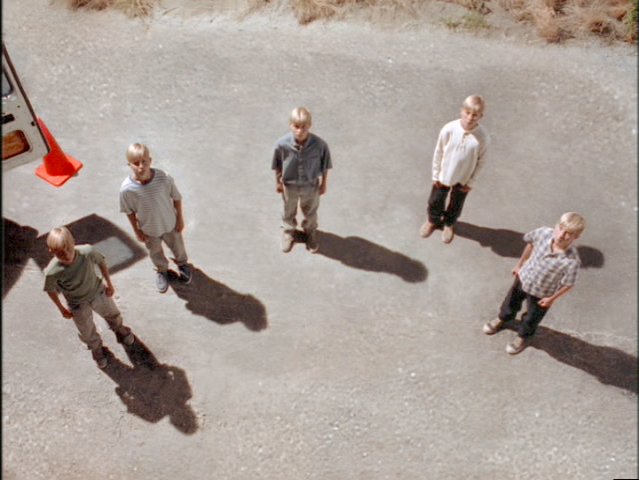 |
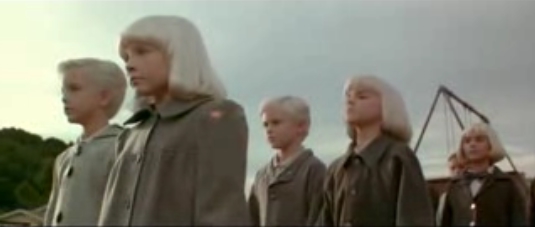 |
– Candyman (Bernard Rose, 1992)
– Candyman: Farewell to the Flesh (Bill Condon, 1995)
These horror films speak about the legend of the Candyman (and his comeback when he is summoned), a killer beyond the grave. The origins of the Candyman were that of a 19th-century artist and son of a black slave who was beaten up, mutilated, and covered with honey, after which bees stung him to death. In his modern day apparitions, the Candyman (Tony Todd, who appeared in the X-Files in 2X04: Sleepless) is accompanied by a swarm of bees. The manner of his death, involving bees, is referenced in the first film and shown in the sequel; the music is by master Philip Glass. It is rather similar to the way the Alien Bounty Hunter is stung in this episode; he is ultimately not killed, merely stalled, and he reappears to continue on his lethal task covered with bee stings. Other killings by bee stings occur in 4X21: Zero Sum.
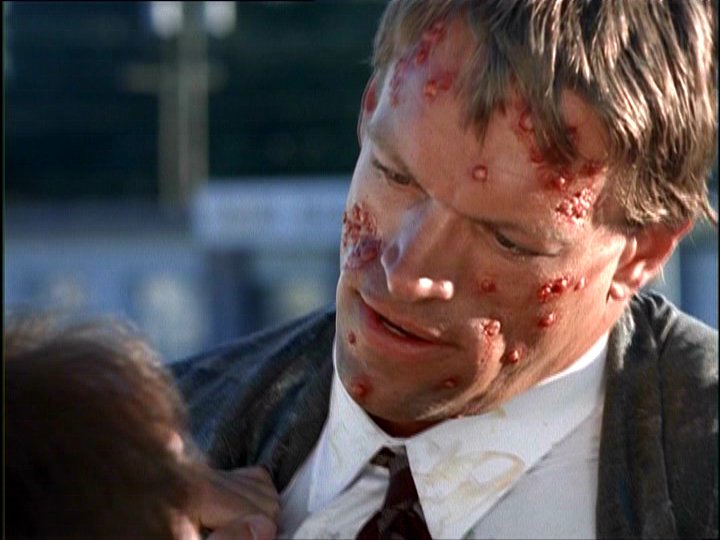 |
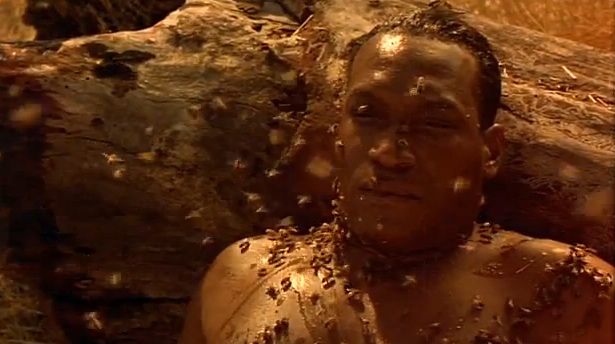 |
4X02: Home
There are several possible inspirations for the Peacock brothers: the “travelling band of friends’ car breaks down and they are attacked by a crazy band of savages” trope is frequent in horror movies.
– The Texas Chainsaw Massacre (Tobe Hooper, 1974)
A group of friends travels to a homestead where they are attacked by a group of cannibals, a family of inbreds — notably by Leatherface, who wears a mask made of human skin.
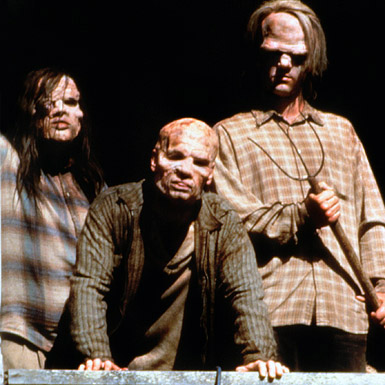 |
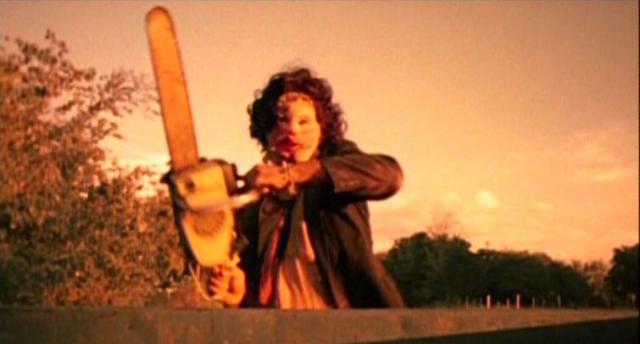 |
– The Hills Have Eyes (Wes Craven, 1977)
A family on a road trip is hunted by a family of deformed cannibals, who live in the wilderness.
 |
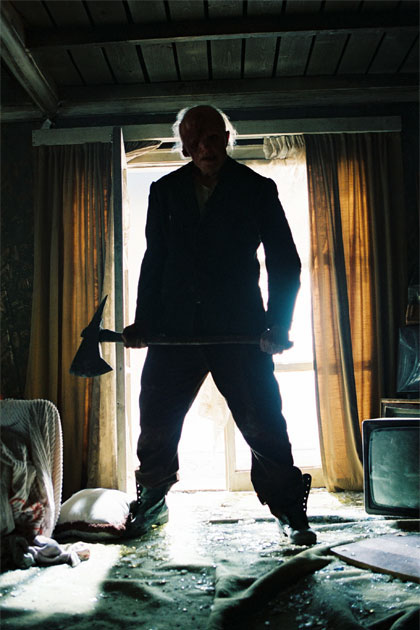 |
– My Autobiography (Charlie Chaplin, 1964)
As mentioned by Glen Morgan in interviews, the episode was inspired by an excerpt from Charlie Chaplin’s autobiography. At some point, Chaplin was host in a remote house; he was led to the kitchen, and from a kitchen cupboard — where he was evidently sleeping — out crawled a man with no legs who began performing a series of strange tricks and dances. The incident shocked Chaplin, and later shocked Morgan too when he read it, and so with Jim Wong incorporated it in the episode in the character of the limbless Peacock mother, living under the bed.
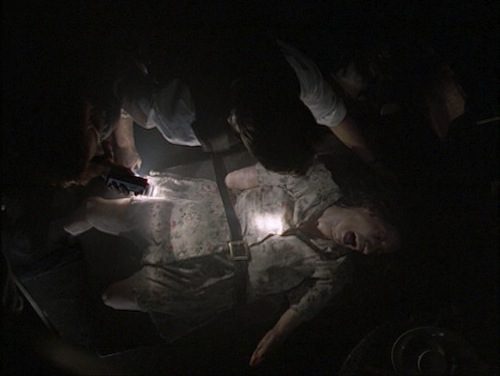
– Dark Nature: A Natural History of Evil (Lyall Watson, 1995)
Jim Wong said “It was inspired by this book called “Dark Nature.””. The book explores the nature of evil throughout history, and draws upon many fields, from biology to psychology, to dress a portrait. This review from Booklist makes it sound exactly like something The X-Files writers would be inspired by: “He considers humanity’s darker nature clinically, albeit within the framework of his view of evil as “a force of nature,” a “part of the ecology [that] needs to be seen as such.” He suggests that, although inherent to human existence, evil can be controlled and maybe eliminated if humans manage to “evolve” away from it.”
The “unevolved” and “evil” Peacocks versus the “civilized” world stem from this.
– Brother’s Keeper (Joe Berlinger and Bruce Sinofsky, 1992)
Glen Morgan: “My wife, Kristen, had shown me “Brother’s Keeper”, which was about this family close to where my brother and I grew up.”
This is a documentary about four illiterate country folk brothers living in a dilapidated house near Syracuse, New York, and one of them being suspected for the murder of another. It depicts how people from “the city” are quick to judge “country folk” — while also showing a very unhygienic and “unevolved” way of life that has survived in present times.
4X06: Sanguinarium
– Les Yeux Sans Visage (Georges Franju, 1960)
The story of the episode is quite similar to that of the film, where a surgeon kidnaps young women in order to graft their faces on the face of his daughter, who has been disfigured in a car accident. In the episode, the plastic surgeon does that operation on his own face, substituting his old face with a new one.
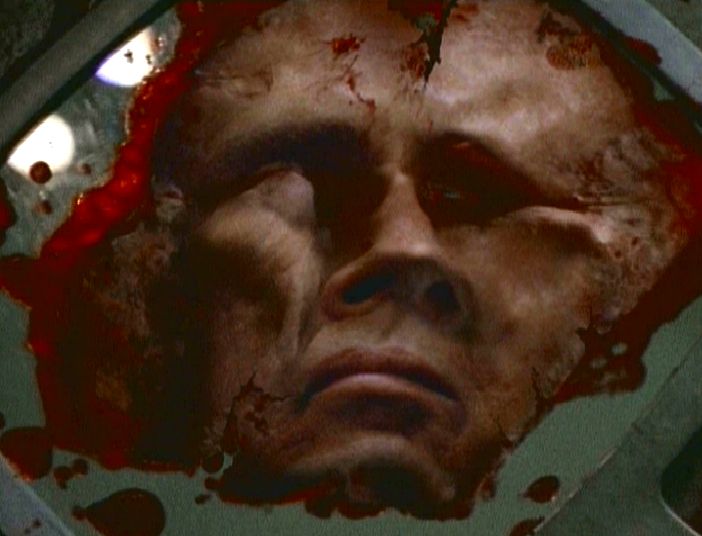 |
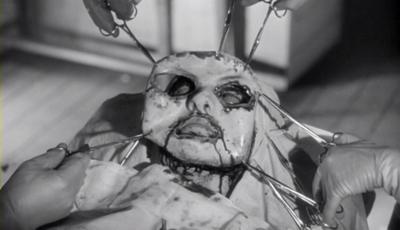 |
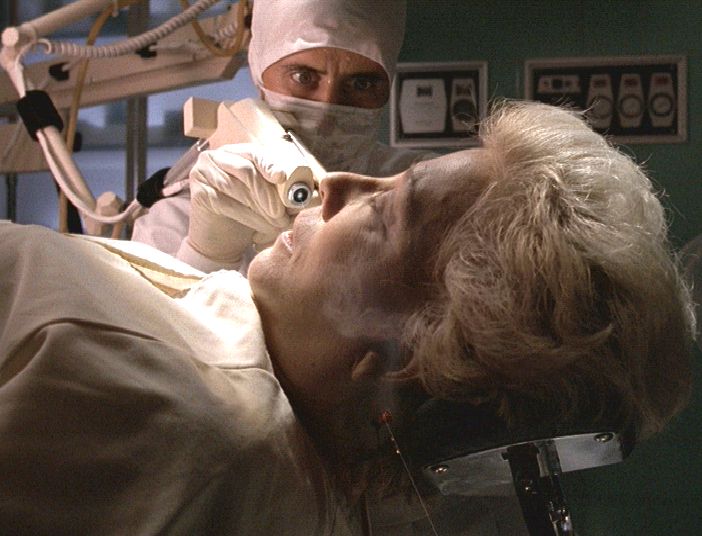 |
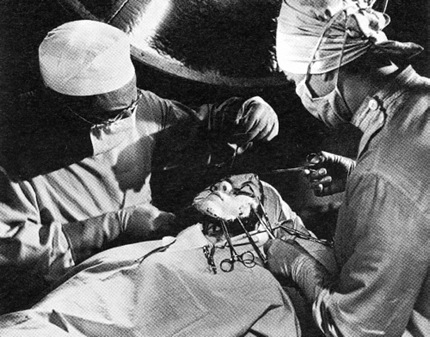 |
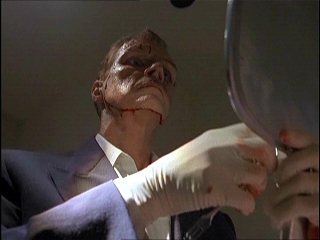 |
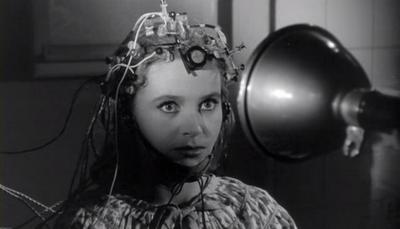 |
– The Craft (Andrew Fleming, 1996)
Levitation is a phenomenon often associated with magic and witchcraft. It was feautred in “The Craft”, which came less than a year before Sanguinarium was made. It deals with four teenager girls that are a bit outsiders and practice witchcraft to curse people who anger them (a bit like 3X13: Syzygy, however “The Craft” came out after that episode).
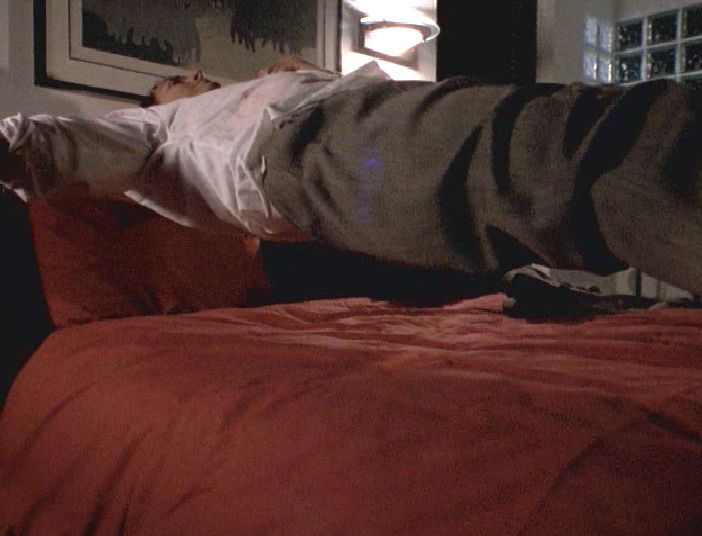 |
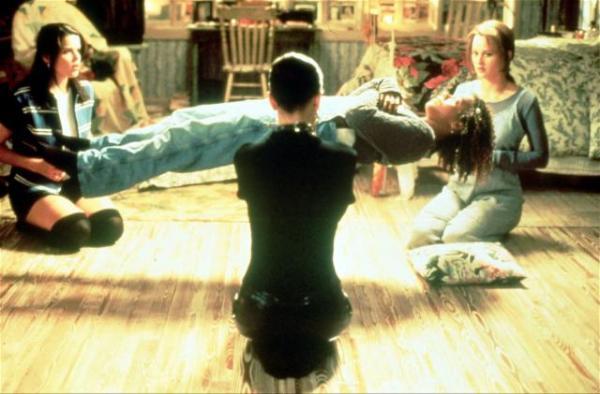 |
4X07: Musings of a Cigarette-Smoking Man
– Lex Luthor: The Unauthorized Biography (James D. Hudnall, 1989)
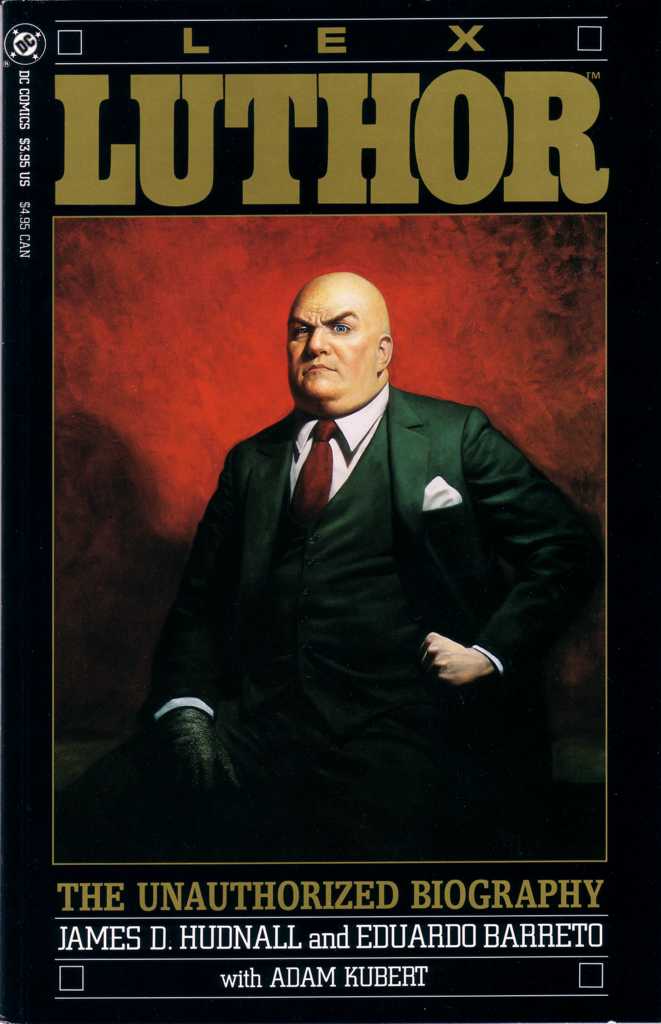
Glen Morgan and James Wong have cited this 52-page single-issue DC comic as an inspiration. In it, we see a the quest of a journalist, who struggles to make ends meet, to uncover details of the background of Luthor, Superman’s nemesis, and we uncover secrets that he would have preferred had stayed buried going back to Luthor’s childhood. The journalist doesn’t escape Luthor’s wrath when he finds out — much like it was Morgan’s intention to have the CSM shoot and kill Frohike at the ending of the episode, but Carter decided otherwise.
– Apocalypse Now (Francis Ford Coppola, 1979)
The scene where the young CSM is assigned the murder of president Kennedy is directly inspired by a similar scene in the beginning of “Apocalypse Now”, where the protagonist (Martin Sheen) is assigned the mission to kill Colonel Kurtz (Marlon Brando). The office setting, some of the camera angles, the presence of two officers who alternate dialogue and others who remain silent, the wording even of the conversation especially when the assignment is given are all very similar.
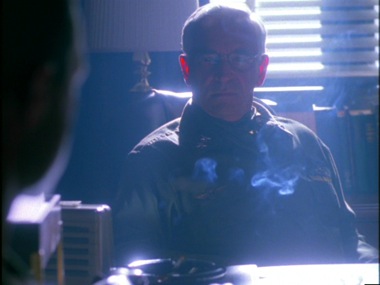 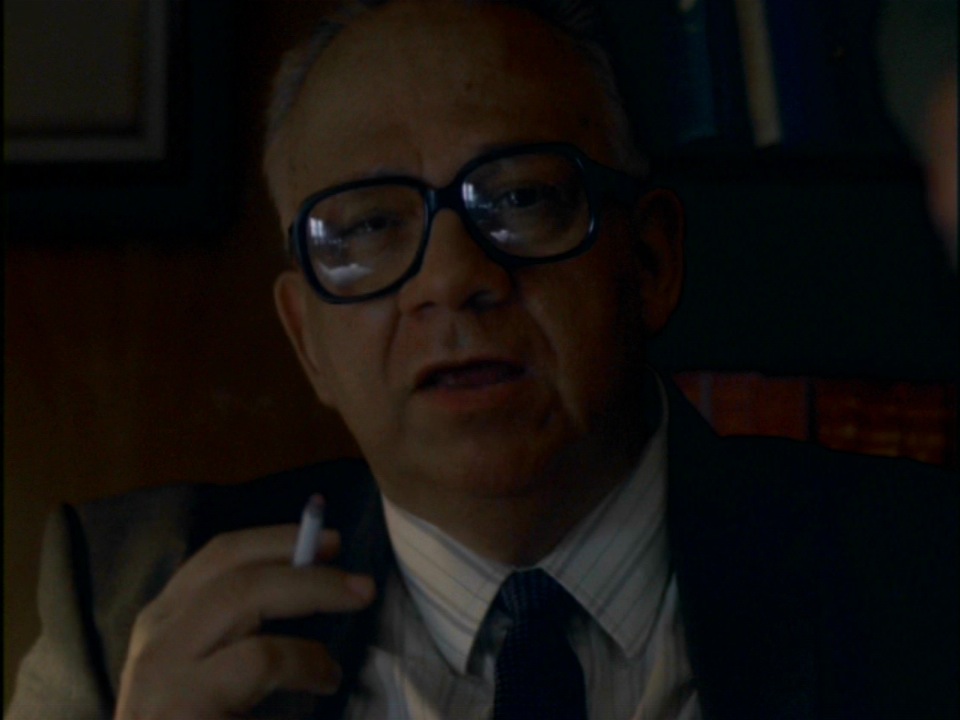 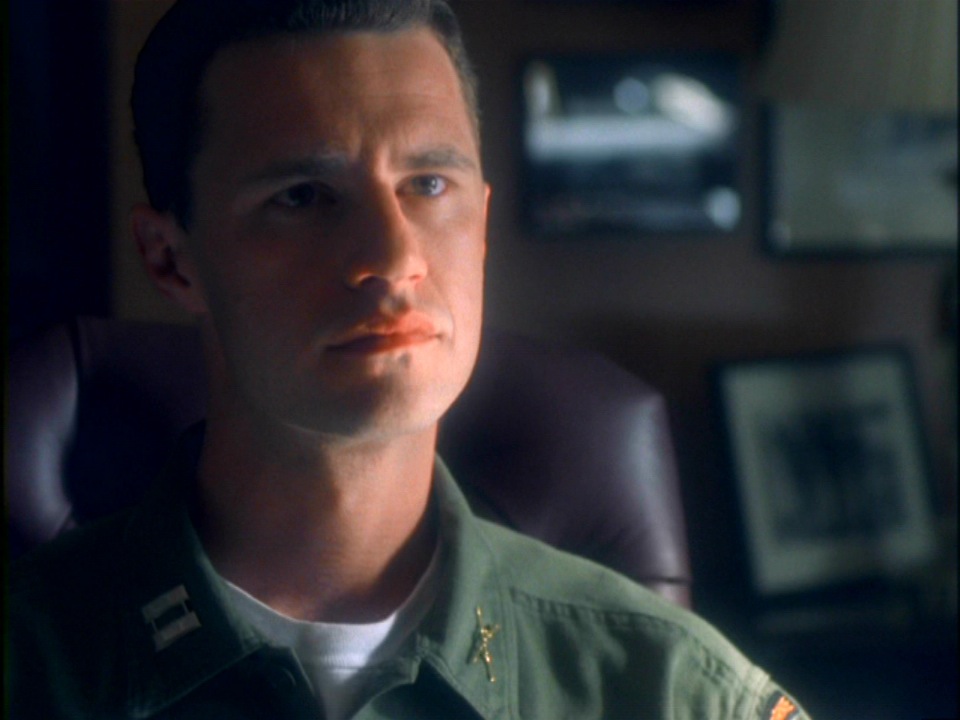 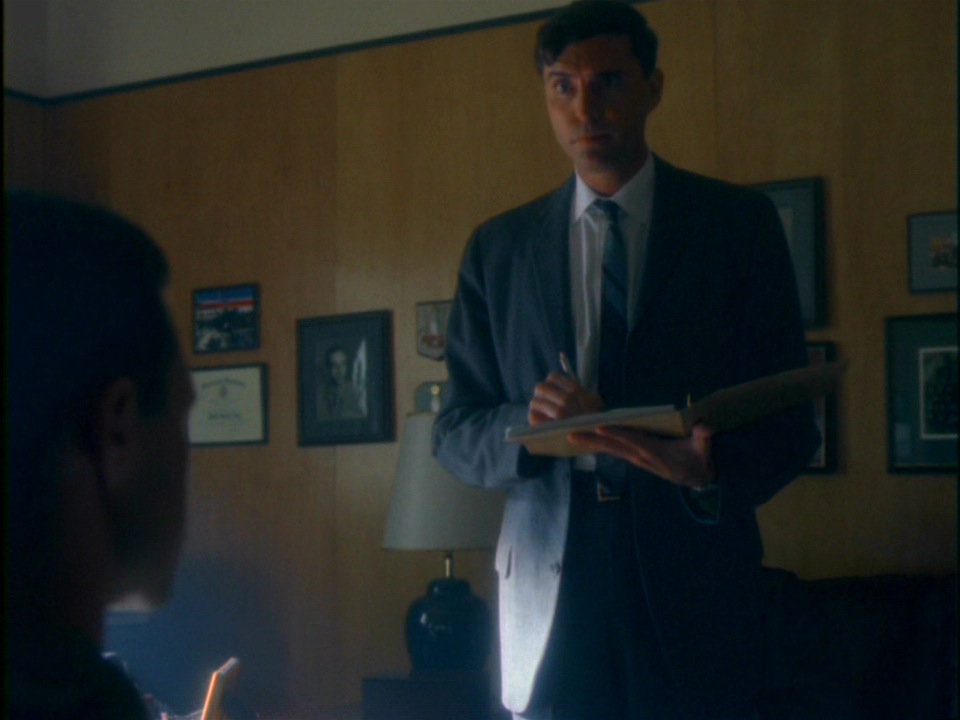 |
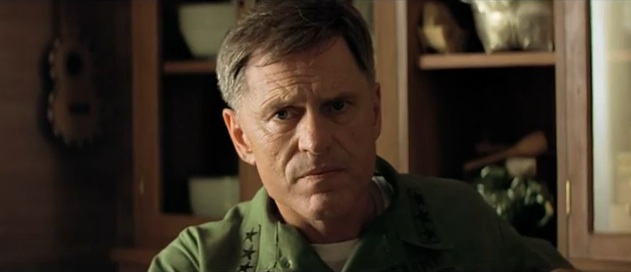 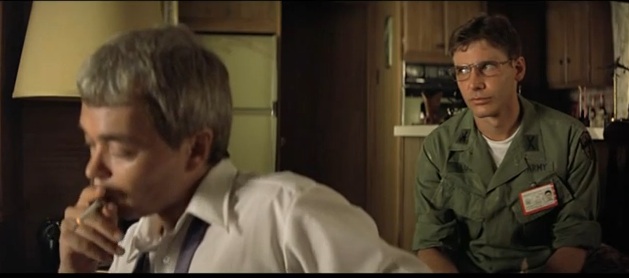 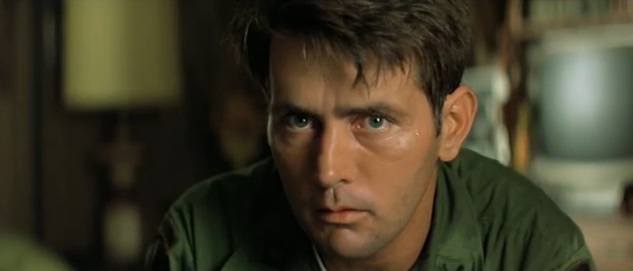 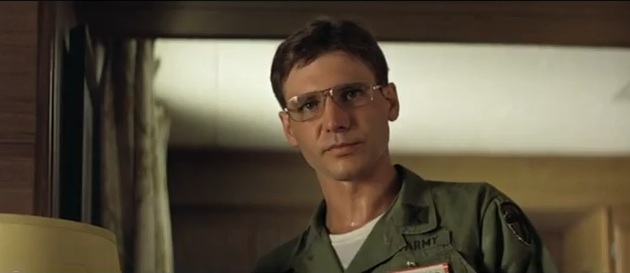 |
– JFK (Oliver Stone, 1991)
The Kennedy murder scene is of course based on the real thing. The over-saturated photography and slightly blurry image are done so purposefully to reflect archival images from that era (early colour videos, 1963) and to mimic in colors the famous Zapruder footage, a video of the shooting captured by one of the citizens present that day (one Abraham Zapruder). Since “JFK” is a proven influence on the X-Files (see 1X01: Deep Throat, 1X16: E.B.E.), it is possible that the look of how “JFK” also re-created these events was an influence on the making of this episode. “JFK” also mimicked the Zapruder film color palette and in some sequences mimicked the jagged movement of the footage due to it being 18 frames per second (as opposed to 24 frames per second for “normal” film).
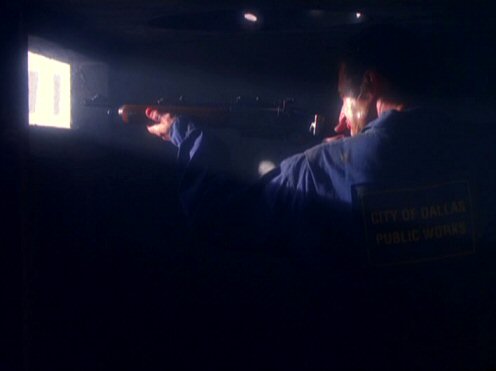 |
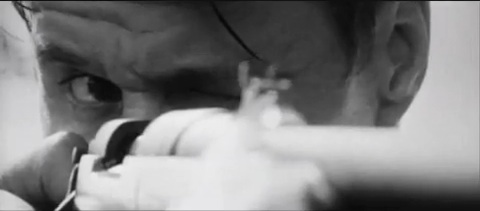 |
– Forrest Gump (Robert Zemeckis, 1994)
Close to the end of the episode, the CSM sits on a bench and reflects on life while a homeless guy nonchalantly rummages through the trash for food. The bench setting and philosophizing on life’s meaning is directly taken from “Forrest Gump”. CSM’s line:
“Life… is like a box of chocolates. A cheap, thoughtless, perfunctory gift that nobody ever asks for. Unreturnable, because all you get back is another box of chocolates. You’re stuck with this undefinable whipped-mint crap that you mindlessly wolf down when there’s nothing else left to eat. Sure, once in a while, there’s a peanut butter cup, or an English toffee. But they’re gone too fast, the taste is fleeting. So you end up with nothing but broken bits, filled with hardened jelly and teeth-crunching nuts, and if you’re desperate enough to eat those, all you’ve got left is a… is an empty box… filled with useless, brown paper wrappers.”
is a dark ironic twist on the famous line in that film, where Forrest Gump (Tom Hanks) says:
“My momma always said, ‘Life was like a box of chocolates. You never know what you’re gonna get.’”
offering chocolates to those who sit on the bench with him. The chocolates in the episode are found in the trash by the bum, and the CSM ignores them.
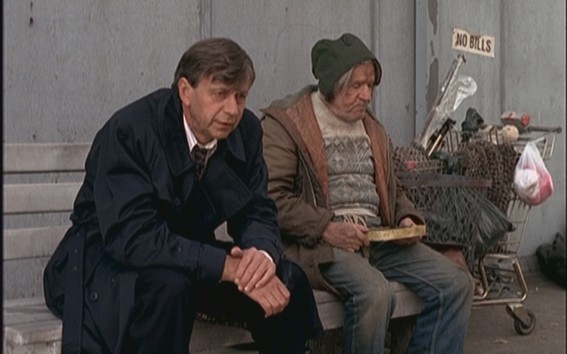 |
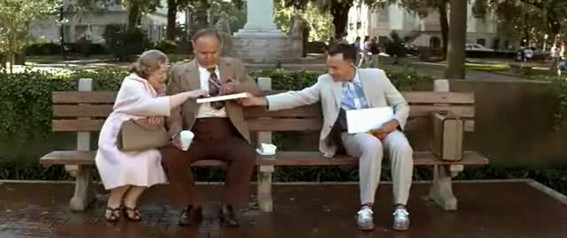 |
4X08: Paper Hearts
– A Nightmare on Elm Street (Wes Craven, 1984)
In the film, the now famous Freddy Krueger (Robert Englund, an X-phile) is a serial killer who stalks and kills his victims by invades their nightmares. In the episode, John Lee Roche (Tom Noonan) does not quite manage to kill through nightmares but he does seem to be able to control other people’s dreams. The tone of the film, slasher horror, is also different from the episode. Freddy Krueger was referenced in another episode that deals with fear and dreams, 7X12: X-Cops.
4X09: Tunguska
– Outbreak (Wolfgang Petersen, 1995)
More of a case of budget optimization than a cinema reference, the Level 4 hazmat suits that Scully, Pendrell and Dr Sack use in this episode and the next are the same suits featured in “Outbreak”, used by Dustin Hoffman, Rene Russo and Cuba Gooding Jr. Released in March 1995, i.e. about a year and a half before Tunguska was shot, “Outbreak” used suits designed by Erica Phillips from Global Effects Inc.; the X-Files crew must have re-used them to minimize expenses. The film itself has a very X-Files-like story: the military and civilian response to the outbreak of a highly contagious and deadly virus (the fictional virus Motaba), featuring USAMRIID and CDC doctors as protagonists.
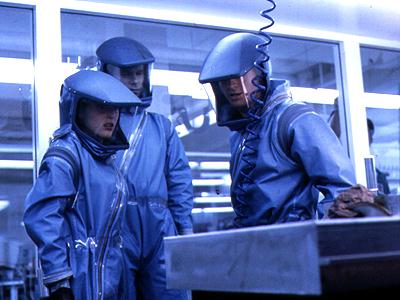 |
 |
4X10: Terma
– Julius Caesar (Shakespeare, ca. 1599)
Act III, scene ii: Antony:
“For Brutus is an honorable man;
So are they all, all honorable men“
Quoted by the Well-Manicured Man: “But Senator Sorenson is an honorable man. They are all honorable, these honorable men.”
4X11: El Mundo Gira
– Close Encounters of the Third Kind (Steven Spielberg, 1977)
Another potential reference to this film regarding the photography used, with dark alien silhouettes against a glaring white background.
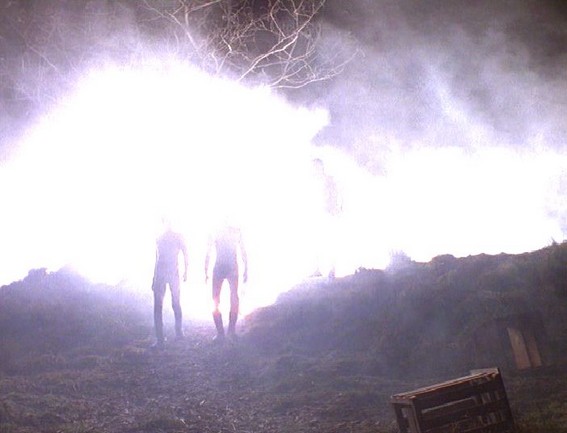 |
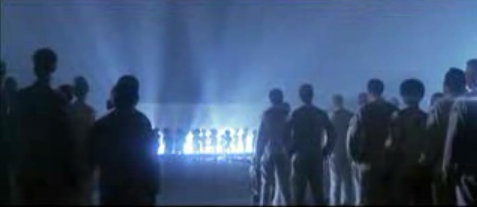 |
4X17: Tempus Fugit
– Close Encounters of the Third Kind (Steven Spielberg, 1977)
Like in 1X03: Conduit, the motel abduction scene is potentially inspired by the abduction scene in “Close Encounters”: an abductee inside a room, bright blinding lights from the outside, humming noise, door opened by telekinesis, horrified or mesmerized faces saturated in white light.
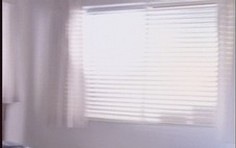 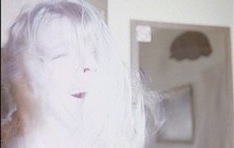 |
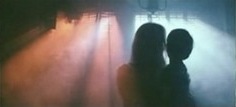 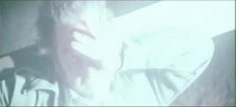 |
4X21: Zero Sum
– The Birds (Alfred Hitchcock, 1963)
The scene where bees attack a playground and children flee in panic, resulting in the death of a teacher, is a direct reference to Hitchcock’s well-known film. In “The Birds”, a bird attack in a school has a similar slow build-up until children and teachers run in panic. Like in the episode, a child loses her/his glasses, which get stepped on and broken in the stampede.
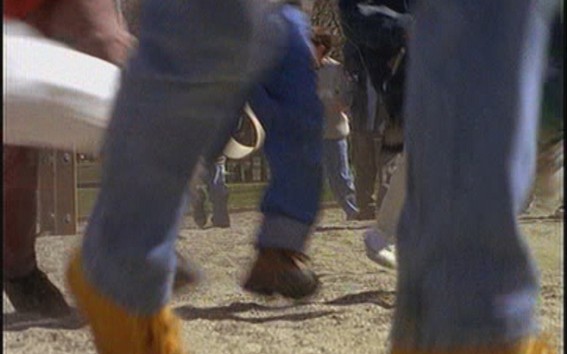 |
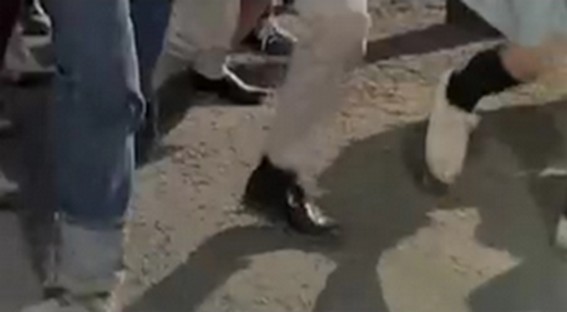 |
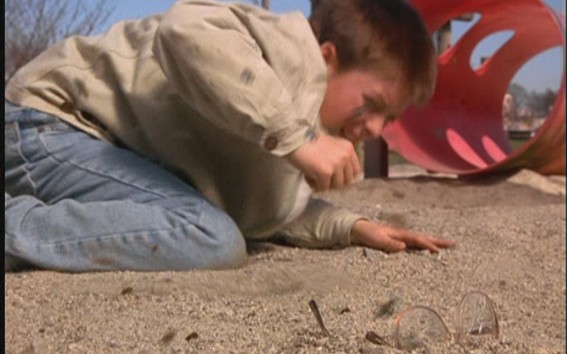 |
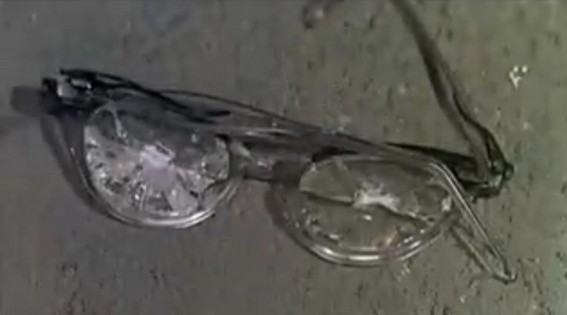 |
Leave a Reply